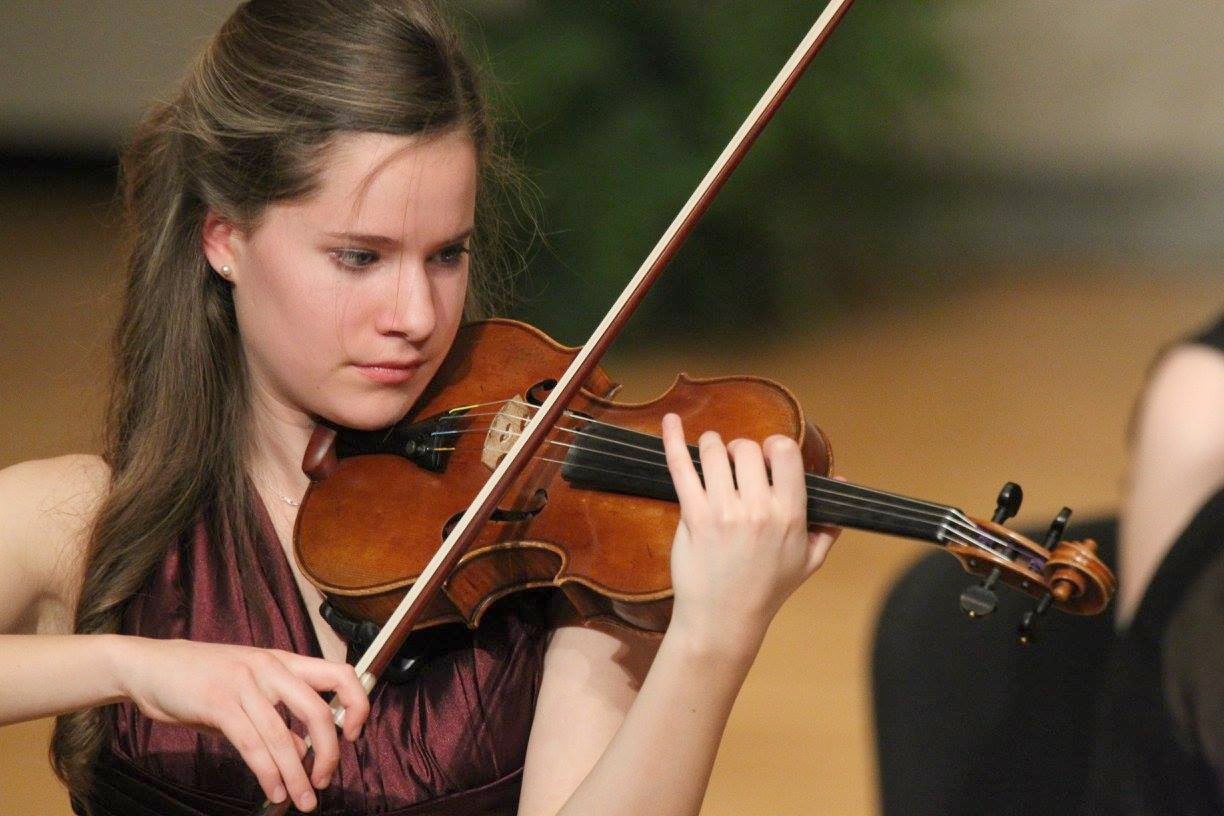A new children’s book, The Dance of the Violin, is based on superstar violinist Joshua Bell’s first competition at the age of 12.
The book vividly retells how the young Bell fumbled while performing a piece very difficult for someone his age — Edouard Lalo’s Symphonie Espagnole. The judges gave Bell a second chance, and he went on to place third and then first when he returned the subsequent year.
That competition was the Stulberg International String Competition, which this year takes place May 13 at the Dalton Center Recital Hall in Kalamazoo.
The Dance of the Violin is only one story that conveys the nurturing and transformative atmosphere of the Stulberg Competition, which can best be described as a vibrant network connecting the industry’s best.
“The competition is very much a grassroots investment in the future for very deserving young musicians,” said Margaret Hamilton, executive director of the Stulberg Competition.
The annual competition invites young string instrumentalists to Kalamazoo for an exhilarating day of performances. Gold medalists receive a $6,000 award and the invitation to perform a concerto with the Kalamazoo Symphony Orchestra or the Grand Rapids Symphony — a rare opportunity for any musician under the age of 20.
This year, 12 young musicians from across the continent will compete. The 2017 semifinalists were selected from a pool of 170 applicants — the largest group yet, according to Hamilton.
One of the many draws of the competition is the opportunity to perform for its judges, who are consistently luminaries of the string world. This year, the judges for the competition are: concertmaster of the Philadelphia Orchestra, David Kim; renowned violist Yizhak Schotten; and sought-after cello pedagogue Amit Peled. Judges remain in Kalamazoo the day after the competition to hold master classes for regional students.
The competition is named in honor of Julius Stulberg, who before he passed away in 1974 was a professor of violin at Western Michigan University, conductor of the university’s symphony, and longtime conductor of the Kalamazoo Junior Symphony. The impact of Stulberg’s work on the local music community was immeasurable, and his legacy continues today through the competition.
“There is a real outreach vibe that is felt here — a very human element,” Hamilton said. “Everyone who is involved views it as a chance to shape the artistic world of tomorrow.”
All of the competitors are undoubtedly technically superior, and each judge has his or her own perspective on what makes a competitor deserving of the top prize. However, past Stulberg Competition winners do share some qualities — in the words of Hamilton: They are all extraordinarily deep people with passion, commitment and a message to communicate.
“Most of our Stulberg winners go on to become professional musicians — either as solo performers, quartet members, touring group members, orchestra players or University professors,” said Grace Field, who has served as board president and chair of the Music Committee for Stulberg. “In order to fill any of these roles, today’s musicians have to be able to connect with their peers as well as their audiences.”
The competition semifinals begin in the morning. After each participant performs a J.S. Bach solo piece and a movement from a concerto of their choosing, they are narrowed down to six potential winners. Many audience members who attend the semifinals return for the final evening concert to cheer on their favorites.
“I often compare the intensity of competition day to the Olympics,” Hamilton said. “But there really are no losers. Every one of the 12 participants has a great career ahead of them.”
42nd Stulberg International String Competition
Dalton Center Recital Hall
May 13
Semifinal performances 9 a.m.-4 p.m., free
Final concert at 7:30 p.m., $20 adults, $5 students
stulberg.org, (269) 343-2776





